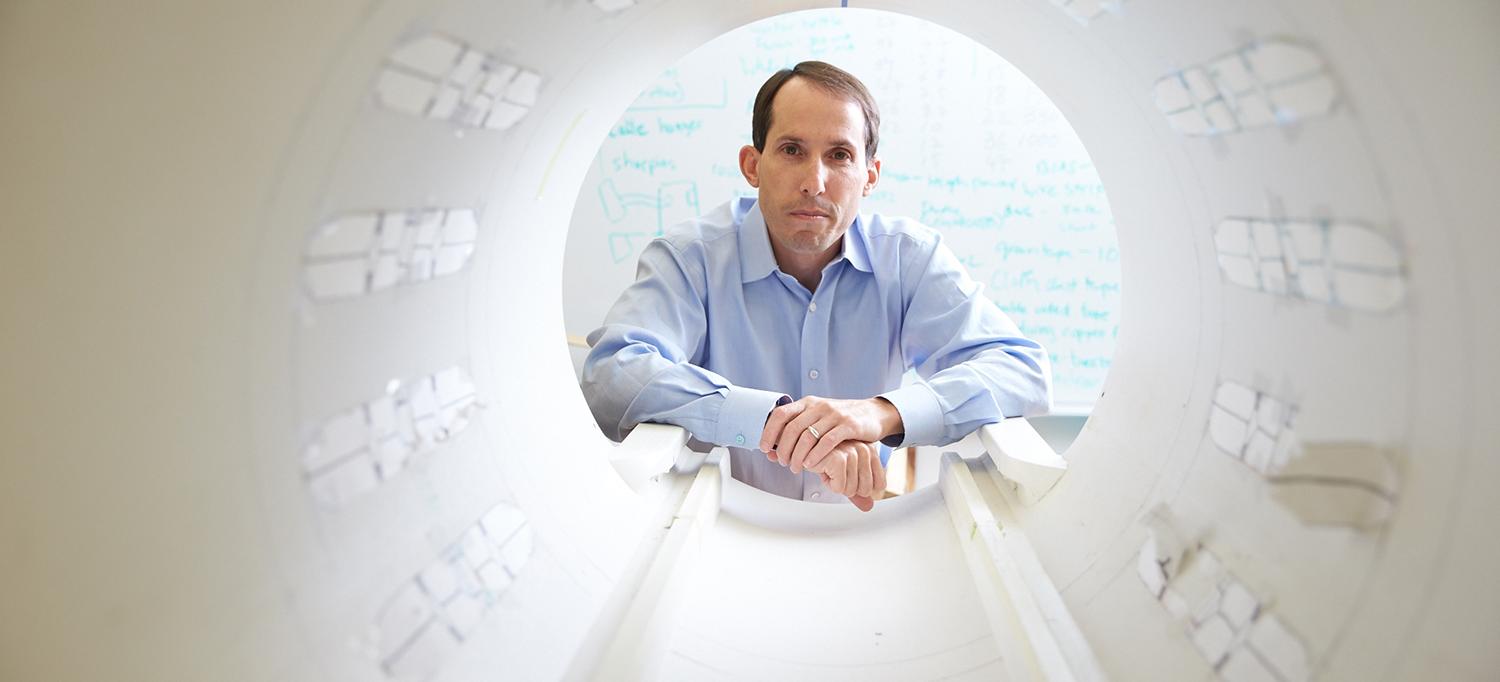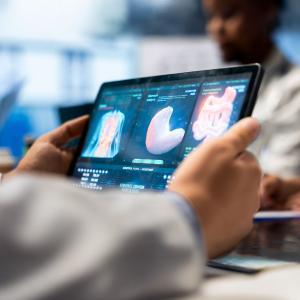Radiologist Dr. Daniel K. Sodickson Is Collaborating with Facebook to Make Magnetic Resonance Imaging Less Burdensome for Claustrophobic Patients

Using AI software, Dr. Daniel K. Sodickson and his team hope to make MRIs more accessible to patients worldwide.
Photo: John Madere
A few years ago, Daniel K. Sodickson, MD, PhD, received a message from a colleague who suggested a partnership with Facebook. His associate was familiar with the research of Florian Knoll, PhD, assistant professor in the Department of Radiology, who was using machine-learning systems to dramatically reduce the time it takes to capture an MRI image. He said Facebook was looking to support artificial intelligence (AI)–related projects that would do some good in the world and thought it might be a good match, recalls Dr. Sodickson, vice chair for research in the Department of Radiology.
That call led to an ongoing collaboration between NYU Langone’s Department of Radiology and the Facebook AI Research (FAIR) unit. The result is “fastMRI,” an initiative that promises to make MRIs far more convenient and accessible to patients worldwide, and benefit NYU Langone patients before the end of this year.
An MRI machine transforms raw radio signals generated by a magnetic field into sharp, detailed images of water-filled tissue and cartilage, including organs, that may not come through clearly in an X-ray. The downside is that it requires a patient to lie still for long periods inside a narrow tube for 15 minutes to an hour. For many patients, especially children, the elderly, and people who are claustrophobic, anxious, or in discomfort, remaining still for that long can be nearly impossible. Some may require sedation, while others simply refuse to get an MRI. The long imaging time also raises costs by limiting the number of patients who can be scanned in a day—one reason many rural regions can’t make MRIs broadly available to patients. “Speeding up MRIs can open them up to new populations,” says Dr. Sodickson.
Early on, he and his colleagues, including Michael P. Recht, MD, the Louis Marx Professor of Radiology and chair of the Department of Radiology, and Yvonne W. Lui, MD, associate professor of radiology and associate chair for artificial intelligence in the Department of Radiology, envisioned a way to apply AI to achieve those higher speeds: capture less raw data and use AI to fill in the gaps by inferring what’s missing. The AI program knows how to flesh out the image in the same way you might know how to fill in gaps in an image of a traffic sign partially obscured by tree branches: by relying on extensive familiarity with the complete object.
To familiarize the program with MRI images, researchers from NYU Langone and Facebook’s FAIR team fed the software the images from the fully anonymized knee scans from 1,000 patient exams. Since each scan generates multiple images, the total number of images provided to the system topped 1.5 million. Along with the images, the program was also given snippets of the radio-signal data that generated them. The system then “learned” how the sharp, detailed images could be derived from the fast-scan data. Achieving the current speed-up of a factor of five involves taking only one-fifth as much raw signal data, yet the software fills in the gaps so well that radiologists can’t tell the results apart from those of full scans.
Facebook’s FAIR group has been essential to the effort, notes Dr. Sodickson. “We have some truly top-notch experts here at NYU Langone, but it’s very difficult to stay on top of every aspect of the burgeoning AI field,” he says. “Besides helping to design and run the process of ‘training’ the system to fill in the missing data in the images, Facebook’s experts also hunted down advances in AI algorithms for other applications that helped improve the results.” (Facebook provided assistance with no expectation that the company would benefit, or that NYU Langone would share any identifiable patient data.)
The AI-enhanced MRIs Dr. Sodickson and his colleagues hope to roll out this year are 5 times faster than current conventional MRIs, but he says the fastMRI team hopes to eventually improve the scanning speed by a factor of 10. “Our progress has been steady,” he says.

